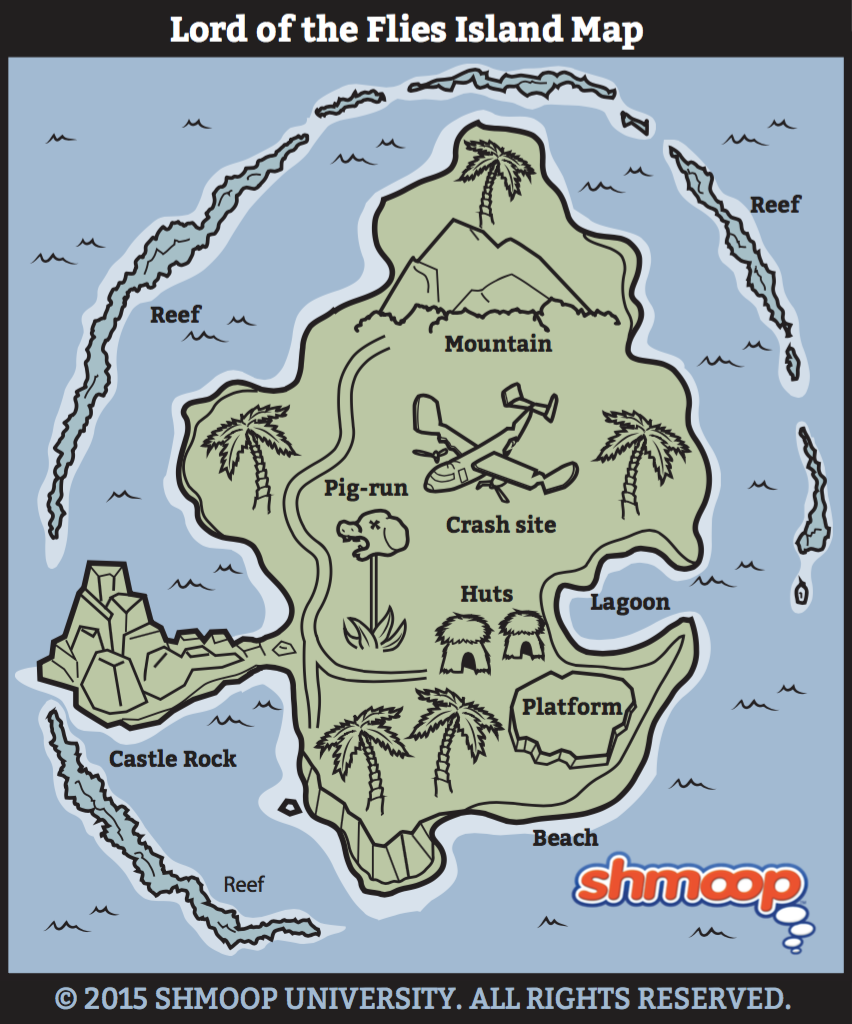Where It All Goes Down
An Uninhabited Island in the Pacific Ocean
Lord of the Flies takes place on an uninhabited island in the Pacific Ocean, at an unknown—but probably 1950ish—year during a fictional atomic war. And what an island it is. We don't find out much about the scenery until the boys do, so we get the same thrill of exploration and satisfaction of discovery.
All we know when we start is that the boys have crash-landed into "the jungle" and Ralph is heading toward "the lagoon" (1.1). The shore of the lagoon is lined with palm trees, which sounds all pool cabana and pink-umbrella drinks. But don't be fooled by this false sense of security—there's a lot more to the island than relaxing waterside views. Ralph looks out over the lagoon towards a "coral reef" and, beyond that, the "dark blue" of the "open sea." Behind him is the "darkness of the forest proper" (1.50). Are you getting all this? We have a dark scary forest (danger), a bright "shimmering" lagoon (excitement), and a wide open sea (isolation).
When Ralph, Jack, and Simon get around to looking about, they head to the closest end of the island, only to find they can't see around the corner because there isn't one; rather, it's a gradual curve. They endeavor to climb the mountain, using a series of "pink rocks" that wind through "the looped fantasy of the forest creepers" and thinking that animals, not people, made this quasi-path. They come to an opening, and now that they are high above the rest of the island, excitedly push a rock that falls through the air and "smash[es] a deep hole in the canopy of the forest" (1).
 (Click the map infographic to download.)
(Click the map infographic to download.)
When the boys can finally see the whole island, they notice on the far side "another island; a rock, almost detached, standing like a fort, facing them." (This is the Castle Rock we'll see later, so get out your highlighters.) A reef encloses one side of the island, about a mile away from and parallel to "their beach."
That's right, "their" beach. Already they've started taking possession of the island. The boys have taken advantage of the naturally occurring structures on the island (reefs, mountains, platforms) and imposed their own system on it. Eventually they impose another human legacy on it: fire. The boys move seamlessly from working in harmony with the island to accidentally kind of, you know, burning it up. By the end of the story, the island isn't a deserted Eden; it's a populated dystopia—just like, we think Golding is saying, every beautiful, natural place that man settles.